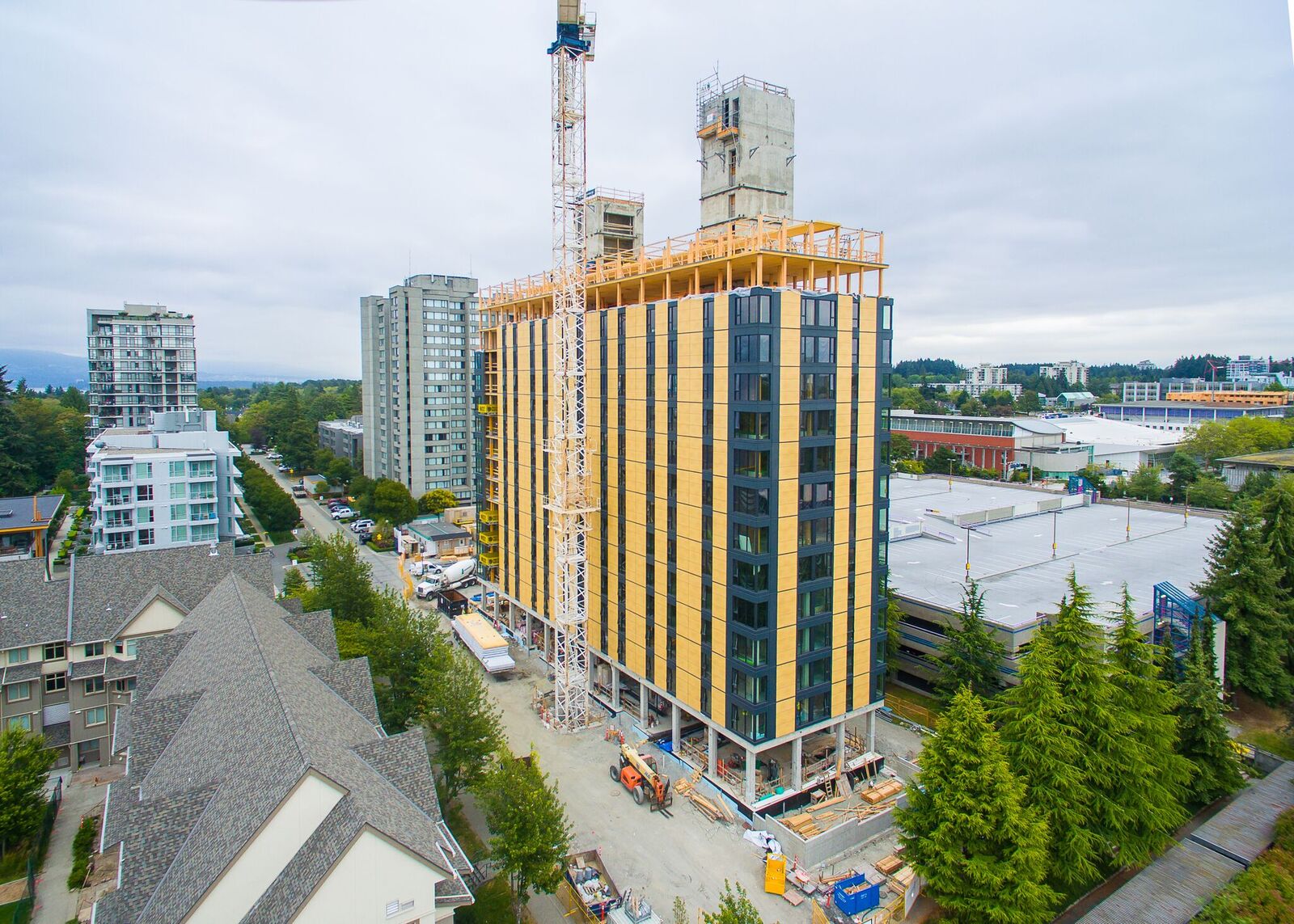Three years after launching a request for an Expression of Interest, through funding received from Natural Resources Canada, for Canadian design teams willing to undertake an innovative approach to designing and building high-rise wood demonstration projects, the Canadian Wood Council (CWC) attended the ‘topping out’ celebration of the University of British Columbia’s Brock Commons Phase 1 tall wood student residence.
When completed, Brock Commons will be among the world’s tallest mass timber hybrid structures at 18 storeys.
“Above and beyond further establishing the safety, economic and environmental credentials of massive timber products used in buildings, UBC’s Brock Commons will inspire current and future generations of architects and engineers to consider its use – ultimately creating another and most welcomed construction choice for builders and new markets for wood product producers,” said CWC president Michael Giroux.
CWC says in a news release that tall wood buildings are not a new concept – with 19-storey wood pagodas built and still standing in Japan and China as far back as 1,400 years ago. There are many contemporary examples as well with taller buildings built within the past five years in Australia, Austria, England, Italy, Norway and Switzerland.
Backed by science from FPInnovations and the National Research Council, examples such as Brock Commons
offer increasingly compelling data for the building code changes necessary to make the construction of these
innovative buildings more common, CWC says. The CWC is committed to leading this evolution in building codes.





